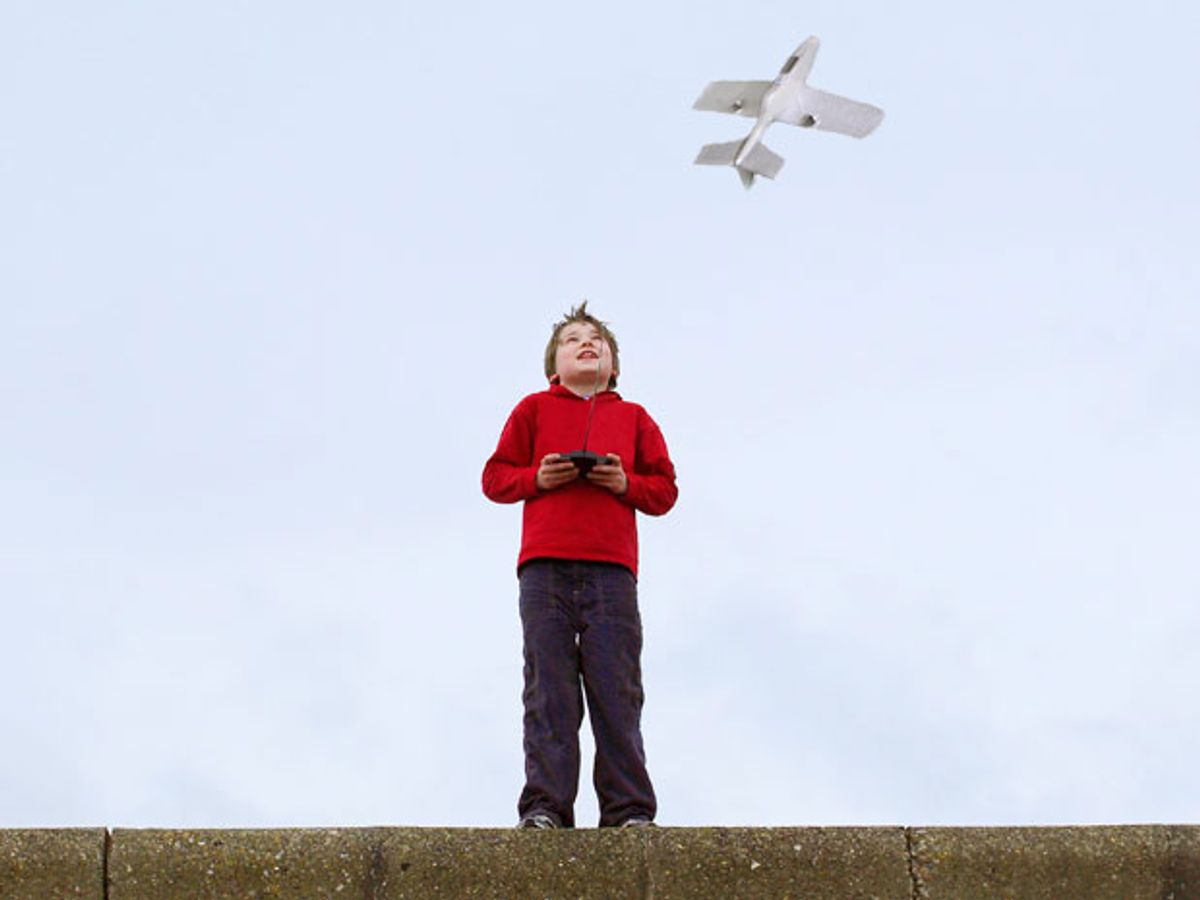According to my best reading of a notice the FAA announced on Monday, things like the US $154 Husban X4 quadcopter are no longer toys—they are true drone aircraft in the FAA's eyes and cannot be flown without a certificate of authorization or special airworthiness certificate.
Huh?
Up to now, the FAA has been distinguishing model aircraft from small drones (or small unmanned aerial systems, to use the FAA’s preferred terminology) according to whether they are flown for recreation or for commercial purposes. If you want to fly a 20-kilogram, turbine-powered radio-controlled model airplane, go right ahead, so long as you only do it as a hobby. Fly a 2-kilogram electric foamy for compensation, and you’re breaking the rules against commercial drone use, though. That was the basic argument the FAA had made against Raphael Pirker, who was issued with a $10,000 fine for flying a model airplane for hire in 2011.
Pirker contested the fine and prevailed in court this past March. Administrative Law Judge Patrick G. Geraghty held in Pirker’s favor, pointing out that the logical extension of the FAA’s arguments about what defines a regulated aircraft would extend to something as small as a paper airplane or balsa-wood glider. The FAA has appealed that decision, which has yet to be taken up by the full National Transportation Safety Board.
In the meantime, the FAA’s small-drone-policing empire is striking back. This week’s FAA notice not only reiterates the FAA’s position that the definition of “model aircraft” requires that the flying be only for recreation, the agency now asserts that the operator must be looking directly at the model in flight, not piloting it with video goggles or other high-tech vision aids. By logical extension, that must mean that flying a video-camera-equipped model airplane or ‘copter using, say, an iPad screen or a video monitor of any type makes it no longer fit the FAA’s definition of a model aircraft.
I’m loudly crying “foul” here because the FAA’s latest announcement just torpedoed a hobby I took up in 2009: flying radio-controlled models in First-Person-View, or FPV, mode. Over the past five years, this angle on the hobby has grown in popularity, particularly with the proliferation of autopilot-equipped multicopters, which are now inexpensive and can be flown by just about anyone.
The Academy of Model Aeronautics, a national organization of more than 150,000 members, is also up in arms over the FAA’s latest move. It’s not yet clear whether the AMA is really going to bat to defend FPV (an activity it has embraced, so long as it is done in a manner that adheres to certain safety rules). For the moment, the AMA is just objecting to the FAA making any rules at all for model aircraft, something Congress forbade when it passed the FAA Modernization and Reform Act in 2012.
The FAA is, of course, well aware that Congress carved out a special exemption for model aircraft with that legislation. The FAA is asserting, though, that the law’s reference to models being “flown within visual line of sight of the person operating the aircraft” means not only that it must be close enough to be seen if you need to look at it, but also that the operator always holds it in his or her direct unaided view (or aided only by ordinary eyeglasses or contact lenses). So no more throwing paper airplanes from skyscrapers, I suppose, unless you’re absolutely sure you can keep it in sight all the way down to the ground.
Presumably the motivation for making such an interpretation is that the FAA does not deem flying models by FPV to be safe. But why not be satisfied with the AMA’s rule that a spotter be used to avoid any possible mishap with a full-sized aircraft? And what about flying FPV with a “buddy box”—a system of linking two radio-control transmitters so that one person (sometimes called the pilot in command) can take control from his flying buddy in an instant? This system is standard for training new RC pilots and was mandated for FPV in an early version of the AMA safety rules. With such an arrangement, FPV is just as safe if not safer than the training of new RC pilots.
And consider this: The FAA allows both free-flight model airplanes, which have no operator in command of their controls, and high-altitude balloons, neither of which have any ability to sense and avoid manned aircraft. So it makes no sense for FAA officials to be outlawing video piloting of models of all types under all circumstances in the name of prudence.
From the wording of the FAA’s new notice, I get the distinct impression that it is not really about safety. Rather, it’s an assertion from the FAA that it has the power set rules for model aircraft, despite the carve-out for models that Congress placed into law in 2012 and despite the administrative law judge’s ruling in the Pirker case in March.
My hope is that this move will backfire: that the courts will ultimately go back to what the Supreme Court decided in 1946 and insist on sensible regulation for small drones or model aircraft or whatever it is you want to call them, current hairsplitting aside—regulations that give landowners the right to decide what goes on in the air within a few hundred feet of their property, not a faceless federal agency.
David Schneider is a senior editor at IEEE Spectrum. His beat focuses on computing, and he contributes frequently to Spectrum's Hands On column. He holds a bachelor's degree in geology from Yale, a master's in engineering from UC Berkeley, and a doctorate in geology from Columbia.



